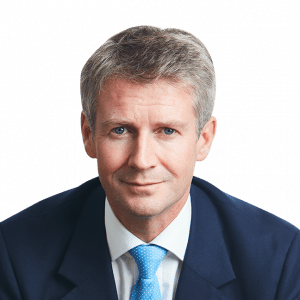Independent placement agents once played a vital role in the private equity sphere, initiating introductions and securing capital commitments for a fundraise. But do independent firms have a future? Houlihan Lokey’s landmark acquisition of placement agent and advisory firm Triago last month created a major force in private capital advisory, and will have other industry players assessing whether similar deals are on the cards. Andy Lund, Houlihan Lokey managing director and global co-head of its private funds group, spoke to AltAssets about the reasons behind the merger, the future of placement agents and his optimistic outlook on the 2024 fundraising market.
Just when the private equity industry had packed up for Christmas last month, investment banking major Houlihan Lokey stepped up with one last big deal of the year – buying up veteran placement agent business Triago to boost its credentials as a one-stop shop for capital advisory. The acquisition is more than just an extra business area for the firm – although that is certainly part of the attraction, according to Houlihan Lokey global private funds group co-head Andy Lund. He told AltAssets, “We get a brand new business entirely – the direct investment business. That’s something we didn’t have. We do some co-investment around the edges, but this is very different, this is much more sophisticated.”
The deal is much broader than this, however. Houlihan’s initial vision was to have a multi-aspect advisory platform that had a relevance to its GP clients at any stage in their lifecycle. Lund says the acquisition not only broadens their well-established primary business but also transforms their secondary platform and dovetails with the firm’s existing GP advisory operations. “What it means is at the end, when the deal closes, we’ll certainly have those four legs of the stool at scale, all working in perfect harmony. So it’s the integrated model across those four business lines, which makes us feel that we’re just more relevant, more strategic for our clients.”
Lund had previously spoken on integrating Triago’s directs team, which he said was the “fastest growing space in private equity”. He said the cohort of LPs that want to engage in transactions on a direct basis is still growing, following early moves into the space from large pension funds over the past decade or so. These are investors that want to become more active operationally, he said, such as taking a seat on the board. “Back in the day, it was the Canadians who were more aggressively looking for these kinds of transactions. Now, you have some very smart family offices looking to access these deals, and have very capable, very sophisticated principals on those teams that can add value to the portfolio – or the company itself.”
On the GP advisory side of the business, it’s all down to relationships with sponsors, and Houlihan Lokey has thousands of them. “That builds up an enormous amount of trust and goodwill. The potential to sell a part of their business is one of the most sensitive decisions that a managing partner will ever make, so they want someone that they can really trust, someone that they’ve transacted with many times.”
But are advisors always necessary? In speaking to Lund about the possibility of GPs going at it alone, and whether that’s a good idea, he said the feelings on that changed during the pandemic. He said of the more technical businesses, advisors are usually sought out – especially for stake sales. But the secondary aspects are a different story. “I think for the secondary aspects, they usually have an advisor of some description. Where GPs have over the last few years decided to go it alone is on the primary side.” Fundraising before Covid, he said, was relatively straightforward. “There was a lot of capital around that had some great distributions. And so many GPs, particularly high-quality ones, who have historically been successful fundraisers, had decided to go it alone. I think those days are over.”
He added, “Over the last couple of years there has been a tiny proportion of the overall number of GPs that are trying to fundraise at any one time that achieved their targets in a short time frame. And there’s a next layer down of still really high quality GPs that have taken much, much longer to get to their fundraising targets… the model is still, every three or four years, you come back to the market and raise more money. So that’s got the leadership of these teams nervous. And so what we’re finding is the value of the primary placement services has never been higher.”
Lund said having in-house placement services gives the firm tremendous amounts of insights and potential dealflow, especially in regards to secondaries. “There’s not a sponsor in the US and Europe that we don’t know and don’t cover from a corporate finance perspective. So we understand in detail what their portfolios look like. Therefore when we’re advising a GP client on a potential M&A transaction, a GP-led secondary becomes part of that conversation. It’s just another strand to the sell side M&A narrative. It would be much harder as an independent boutique to have that connectivity with the sponsor universe.”
He believes this integrated model of merging placement agencies with a PE firm is going to pick up momentum. “I think the industry as it relates to placement agents is going through a period of change. The days of the independent boutique dominating are gone.” That will come as little surprise to those that have kept up with the bleak fundraising landscape in the last year – if your business model is dependent on a vibrant fundraising market, then any slowdown in capital raising is inevitably going to hit you hard.
“There are many other examples in the industry right now, either of independents finding it difficult because they don’t have an integrated model or they have a consolidation plan that seems to be causing problems for the private funds group element, because it’s really focusing on a broader corporate finance solution.” Lund says that as a result, a lot of market participants are focused on achieving an integrated model. “Having said that, I think very few still have a genuinely integrated model. They might have all the business lines under a corporate umbrella, but those teams don’t necessarily all work together. And that’s our advantage at Houlihan.”
Turning his attention to the future of fundraising in 2024 and what that might look like, Lund said, “For the first time in a long time I’m actually trending optimistic about the primary fundraising market. I think 2024 is going to be a much better market.” He says this is due, in part, to the lack of mega cap managers getting prioritised this quarter. “Over the last couple of years we’ve seen a number of these managers come back to market – those small numbers – ten to 15 managers – have taken over 50% of the available capital. This year we have far fewer in the market in Q1 and as such we have a much better dynamic in that regard.”
Lund says LPs will play a part in the availability of capital as well. “I think there has been quite a lot of activity behind the scenes with LPs that were very liquidity constrained to do, you know, strategic secondary sales, etc. So I think some problems have been solved.”
He said he is witnessing a lot of potential new groups, some of which are “extremely interesting”. These groups will provide an opportunity for new funds to dip into the market. “If you’re a junior partner in a private equity firm, and you’ve had very successful results but the drag is from other people’s deals, this might be the moment where you decide you actually want to get into business yourself and set up your own shop.”
All of this plays its part in what Lund says is going to be a better fundraising market than we’ve seen. He emphasises that it’s not going to be a bull market – just a better one.
Copyright © 2024 AltAssets



























